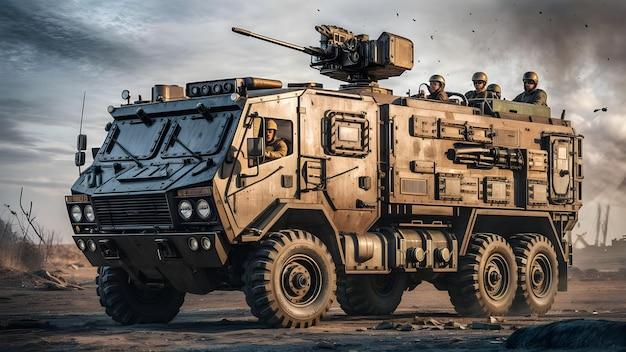In a world where technology is constantly evolving, the military is always seeking to stay ahead of the curve. One of the latest innovations to come out of the Army’s research and development is the first all-digital ground vehicle design. This cutting-edge project promises to revolutionize the way we think about military vehicles and the capabilities they possess. Join us as we explore what the Army has learned from this groundbreaking endeavor and how it is reshaping the future of military operations.
Key Lessons from the Armys First All-Digital Ground Vehicle Design
The Army’s first all-digital ground vehicle design project provided valuable insights into the future of military vehicle development. One key lesson learned was the importance of real-time data analysis in improving vehicle performance and decision-making on the battlefield. By incorporating advanced sensors and cloud computing capabilities, the Army was able to gather and analyze crucial data during operations, leading to more efficient and effective mission outcomes.
Another crucial lesson from the project was the significance of collaboration across different departments and teams. By fostering a culture of interdisciplinary teamwork, the Army was able to leverage diverse expertise and perspectives to overcome challenges and innovate rapidly. This collaborative approach not only accelerated the development process but also resulted in a ground vehicle design that was truly cutting-edge in its technology and capabilities.
Efficiency Improvements in Prototyping and Testing Processes
The Army recently completed its first all-digital ground vehicle design project, revolutionizing its prototyping and testing processes. By implementing new technology and procedures, the Army was able to significantly improve efficiency in these crucial stages of development. One of the key takeaways from this project was the importance of integrating advanced simulation tools into the prototyping phase. This allowed for more accurate and thorough testing, reducing the need for physical prototypes and saving both time and resources.
Additionally, the Army found that streamlining communication between design teams and testing facilities was essential for success. By utilizing cloud-based collaboration tools and virtual meeting platforms, team members were able to work together more effectively and efficiently. This not only sped up the prototyping and testing processes but also led to better overall design outcomes. the Army’s experience with all-digital design has shown the immense potential for through the use of innovative technologies and improved communication tactics.
Challenges Faced during the Digital Design Transition
The digital design transition posed several challenges for the Army during the development of its first all-digital ground vehicle. One major obstacle was the integration of advanced technology into the vehicle’s systems while ensuring compatibility and functionality. The shift from traditional design methods to a fully digital process required significant adjustments in approach and mindset.
Another challenge faced was the need for specialized training for personnel involved in the digital design process. With new software and tools being introduced, it was crucial for team members to quickly adapt and learn how to effectively utilize these resources. Overcoming this learning curve was essential for the successful implementation of digital design in the Army’s ground vehicle development projects.
| Challenges | Solutions |
|---|---|
| Lack of experience with digital design | Providing training and support for personnel |
| Compatibility issues with new technology | Thorough testing and integration processes |
| Resistance to change from traditional methods | Encouraging a shift in mindset and approach |
Recommendations for Future Digital Design Projects
In reflecting on the Army’s first all-digital ground vehicle design project, several key emerged:
Firstly, prioritize collaboration and communication among team members to ensure that everyone is on the same page throughout the design process. This can include regular team meetings, using digital collaboration tools, and fostering a culture of open communication.
To Wrap It Up
the Army’s debut of its first all-digital ground vehicle design marks a significant step forward in modernizing its fleet. By harnessing the power of digital technologies, the Army is able to enhance its capabilities and stay ahead of evolving threats. As they continue to learn and adapt from this experience, we can expect to see even more innovative and efficient vehicles coming down the pipeline. The future of military technology is rapidly evolving, and the Army is clearly determined to remain at the forefront. Exciting times lie ahead for the world of military vehicle design.
